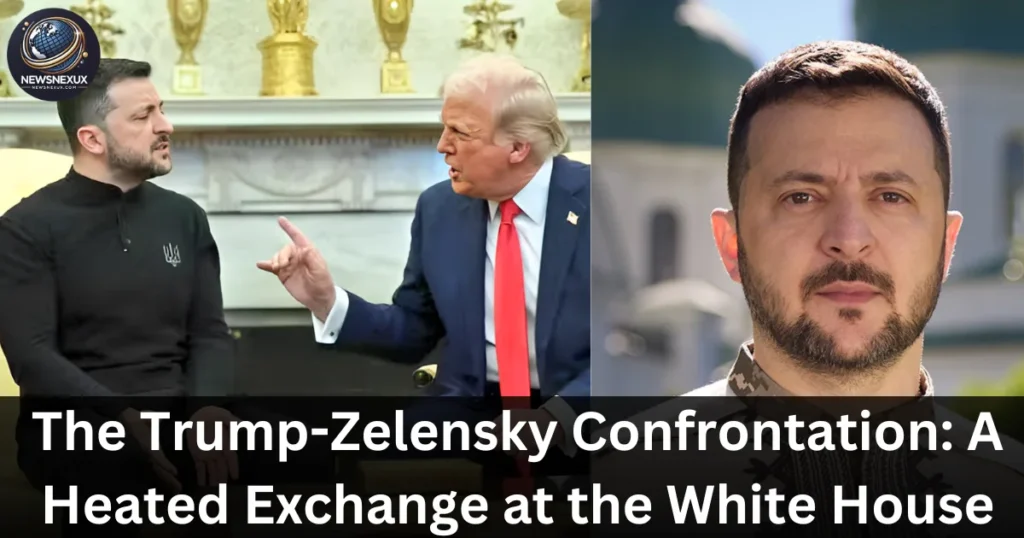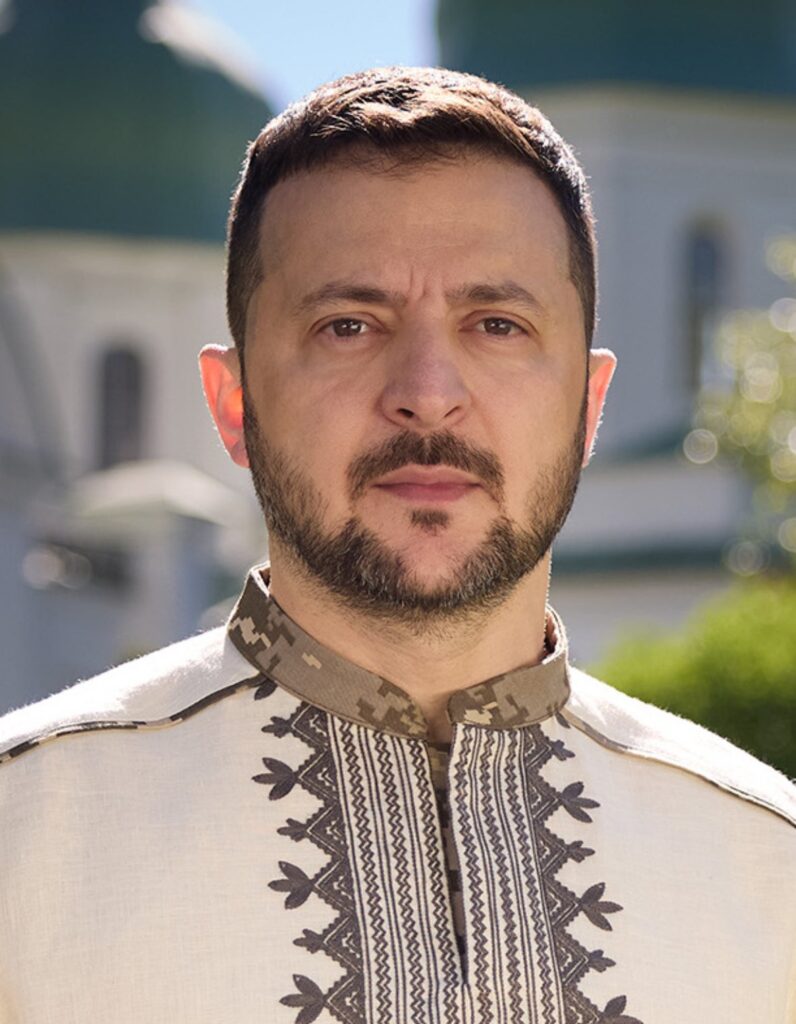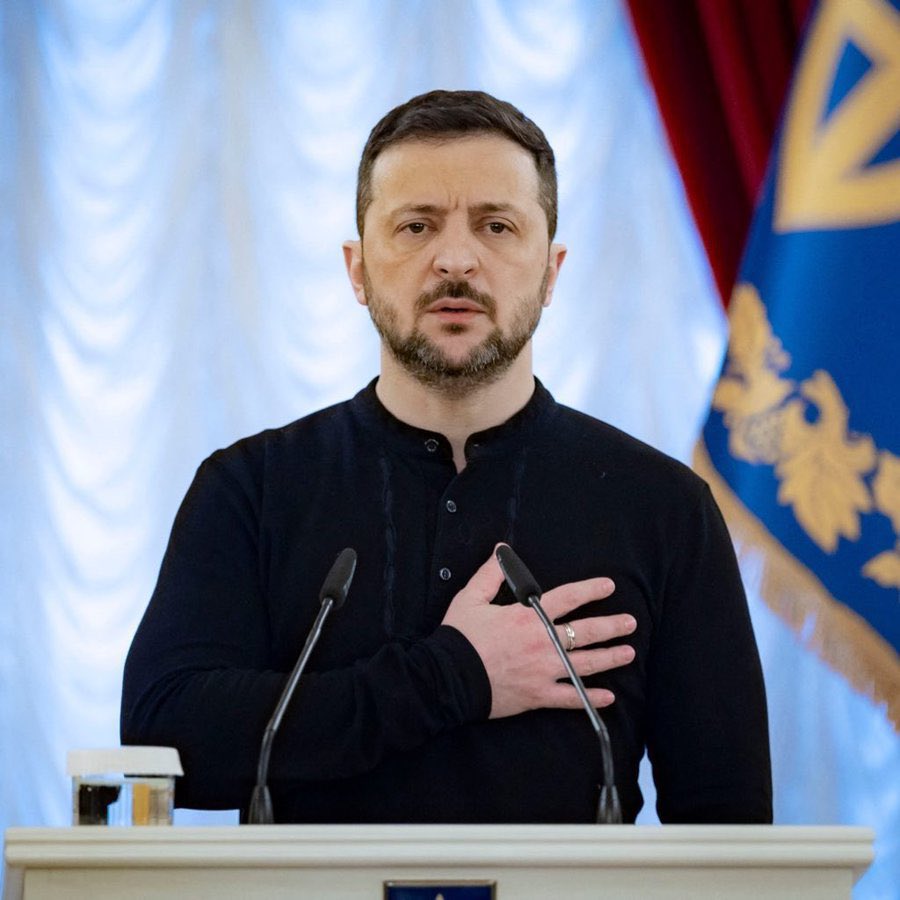
The recent meeting between US President Donald Trump and Ukrainian President Volodymyr Zelensky at the White House was anticipated to be a diplomatic engagement aimed at strengthening ties between the two nations. However, what transpired was a dramatic and public confrontation that has since made headlines worldwide. This article delves into the details of the Trump-Zelensky confrontation, the underlying issues, and the implications for US-Ukraine relations.
The Meeting: A Diplomatic Encounter Turns Sour
The meeting between President Trump and President Zelensky was their first face-to-face encounter since Trump returned to power in January. The initial moments of the meeting were cordial, with both leaders exchanging compliments and pleasantries. However, the atmosphere quickly deteriorated, leading to a heated argument that played out in front of the global media.
The Exchange of Compliments
यूक्रेन एक छोटा देश है, कम से कम वहां के राष्ट्रपति #Zelenskyy ने हिम्मत से अपने देश के लिए #Trump की बदतमीजी के सामने साहस तो दिखाया।
— Ritu Choudhary (@RituChoudhryINC) March 1, 2025
हमें इस बात का दुख है कि ट्रंप मोदी जी के सामने रेसिप्रोकल टैरिफ की बात करते रहे और मोदी जी चुप थे।pic.twitter.com/3CyQKspPAV
The meeting began with a handshake and smiles, as is customary in diplomatic engagements. Both leaders acknowledged the importance of their nations’ relationship and expressed hope for a productive discussion. However, the cordiality was short-lived.
— Donald J. Trump (@realDonaldTrump) February 28, 2025
The Turning Point
The conversation took a sharp turn when US Vice President JD Vance emphasized the need for diplomacy to resolve the ongoing Russia-Ukraine war. Vance’s remarks were seen as a veiled critique of former US President Joe Biden’s approach to the conflict.
“For four years, the United States had a president who stood up at press conferences and talked tough about Vladimir Putin and then Putin invaded Ukraine and destroyed a large part of the country. The path to peace and prosperity, perhaps, is to engage in diplomacy,” Vance said.
He continued, “We tried to follow Joe Biden’s path, beating our chest and pretending that the words of the president of the United States are more important than the actions of the president of the United States. What makes America a good country is to engage in diplomacy. That’s what President Trump is doing.”
Zelensky’s Response


President Zelensky, visibly agitated by Vance’s comments, sought to interject. “Okay. So he (Vladimir Putin) occupied it, our parts, large parts of Ukraine, the eastern parts and Crimea. So, he occupied it in 2014. Over the course of many years – I’m not just talking about Biden, but at the time there was (Barack) Obama, then President Trump, then President Biden, now President Trump and God bless, now, President Trump will stop him. But during 2014, nobody stopped him. He just occupied and took over. He killed people,” Zelensky said, referring to the annexation of Crimea.
Zelensky’s frustration was palpable as he recounted the years of conflict and the lack of effective intervention by successive US administrations. “Yes, but from 2014 to 2022, the situation was the same. People are dying on the line of contact. Nobody stopped him. You know we negotiated with him, a lot of negotiations… and we signed an agreement with him. (French President Emmanuel) Macron and (former German Chancellor Angela) Merkel signed a ceasefire. They all told me he would never leave… But after that, he broke the ceasefire, he killed our people, and he didn’t swap prisoners. We signed a prisoner swap. But he didn’t. JD, what kind of diplomacy are you talking about? What do you mean?” Zelensky said.
Vance’s Retort
Vance’s response was blunt and dismissive. “I’m talking about the kind of diplomacy that is going to end in the destruction of your country,” he said.
Zelensky, taken aback, attempted to continue his argument, but Vance interrupted. “Mr. President, respectfully, I think it’s disrespectful for you to come into the Oval Office and try to litigate this in front of the American media. Right now, you guys are walking around and forcing troops to go to the front lines because you have a manpower problem. You should thank the president,” Vance said.
The Escalation
The confrontation escalated further when Zelensky questioned Vance’s understanding of the situation in Ukraine. “Have you ever been to Ukraine to see the problems they have?” Zelensky asked.
Vance’s reply was equally pointed. “I’ve actually seen the stories and I know what happens when you take people on a propaganda trip, Mr. President,” he said.
Zelensky’s frustration was evident as he responded, “Everyone has problems during a war, even the US. You have good solutions and right now you don’t feel it, but in the future you will feel it.”
Trump’s Intervention
President Trump, who had been relatively quiet during the exchange, finally interjected. “You don’t know that. Don’t tell us what we’re going to feel. We’re trying to solve a problem. Don’t tell us what we’re going to feel,” Trump said.
Zelensky attempted to clarify, “I’m not telling you, I’m responding…,” but Trump raised his voice and cut him off. “You’re not in a position to decide what we’re going to feel. We’re going to feel very good and very strong.”
Trump’s tone was harsh as he continued, “You’re not in a very good position right now. You’ve allowed yourself to be in a very bad position.”
The Ukrainian president tried to interject, but Trump was relentless. “You’re gambling with the lives of millions of people,” he said.
The Aftermath: Calls for Apology and Zelensky’s Refusal
The confrontation did not end with the meeting. US Secretary of State Marco Rubio later called for Zelensky to apologize for the clash with Trump. “Zelensky should apologize for wasting our time for a meeting that was going to end the way it did,” Rubio told CNN.
However, Zelensky refused to apologize. “I’m not sure that we did something bad,” he told Fox News after the fiery clash with the US President and his deputy. The 47-year-old Ukrainian leader expressed regret that the exchange had taken place in front of reporters but maintained that his relations with the US could still be repaired.
“US-Ukrainian ties are about more than two presidents,” he said, adding that Ukraine badly needs Washington’s help in the fight against Russia.
Implications for US-Ukraine Relations
The Trump-Zelensky confrontation has raised questions about the future of US-Ukraine relations. The public nature of the argument and the harsh words exchanged have undoubtedly strained the diplomatic ties between the two nations.
The Role of Diplomacy
Vance’s emphasis on diplomacy as the path to peace and prosperity was met with skepticism by Zelensky, who has firsthand experience of the failures of diplomatic efforts in the past. The Ukrainian president’s frustration with the lack of effective intervention by the US and other Western powers is understandable, given the ongoing conflict and the human cost of the war.
The Importance of US Support
Despite the confrontation, Zelensky acknowledged the importance of US support in Ukraine’s fight against Russia. “US-Ukrainian ties are about more than two presidents,” he said, highlighting the broader strategic partnership between the two nations.
The Need for Dialogue
The heated exchange underscores the need for continued dialogue and engagement between the US and Ukraine. While the confrontation was undoubtedly damaging, it also highlighted the deep-seated issues that need to be addressed for any meaningful progress to be made.
10 Frequently Asked Questions (FAQs)
1. What was the main cause of the Trump-Zelensky confrontation?
The confrontation stemmed from differing views on how to address the Russia-Ukraine war. Vice President JD Vance emphasized diplomacy, while President Zelensky expressed frustration over the lack of effective intervention by the US and other Western powers.
2. Did President Trump directly intervene in the argument?
Yes, President Trump intervened during the heated exchange, raising his voice and accusing Zelensky of “gambling with the lives of millions of people.”
3. Why did US Secretary of State Marco Rubio call for an apology from Zelensky?
Rubio believed the meeting was unproductive and that Zelensky’s public criticism of US diplomacy was disrespectful.
4. Did Zelensky apologize for the confrontation?
No, Zelensky refused to apologize, stating that he did not believe he had done anything wrong.
5. What was Zelensky’s main grievance during the meeting?
Zelensky expressed frustration over the lack of effective intervention by the US and other Western powers since Russia’s annexation of Crimea in 2014.
6. How did Vice President JD Vance respond to Zelensky’s criticism?
Vance dismissed Zelensky’s concerns, stating that the Ukrainian president was being disrespectful and should thank the US for its efforts.
7. What are the implications of this confrontation for US-Ukraine relations?
The public nature of the argument has strained diplomatic ties, but both nations recognize the importance of their strategic partnership.
8. Did the meeting achieve any positive outcomes?
The meeting ended in a public argument, and no significant agreements or resolutions were announced.
9. What role does diplomacy play in resolving the Russia-Ukraine war?
Diplomacy is seen as a potential path to peace, but Zelensky’s skepticism highlights the challenges of negotiating with Russia.
10. Can US-Ukraine relations be repaired after this confrontation?
Zelensky believes the relationship can be repaired, emphasizing that US-Ukraine ties are about more than just the two presidents.
Conclusion
The Trump-Zelensky confrontation at the White House was a dramatic and public display of the tensions between the two leaders. The exchange of harsh words and the subsequent calls for an apology have strained US-Ukraine relations, but they have also brought to the forefront the urgent need for effective diplomacy and support in the face of ongoing conflict.
As both nations navigate the complexities of their relationship, the hope remains that dialogue and cooperation will prevail, ultimately leading to a resolution of the conflict and a stronger partnership between the US and Ukraine. The Trump-Zelensky confrontation serves as a stark reminder of the challenges of diplomacy in a world fraught with conflict and competing interests
